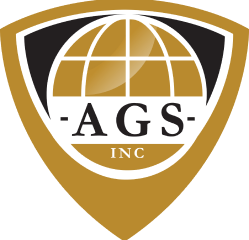Securing the supply chain is a top priority for property managers, chief security officers, and security company hiring managers. Understanding how to manage the security risks associated with vendors and suppliers can significantly reduce vulnerabilities and protect your organization from potential threats. In this post, we'll explore strategies to manage these risks effectively, providing practical tips and insights to help you secure your supply chain.
Understanding Supply Chain Risks
The supply chain involves a network of suppliers, vendors, and partners who provide goods and services to your organization. Each link in this chain represents a potential point of vulnerability. Common risks include:
- Data Breaches: Unauthorized access to sensitive information.
- Third-Party Risks: Weak security practices of suppliers and vendors.
- Operational Disruptions: Interruptions caused by supplier issues.
- Compliance Violations: Non-compliance with regulatory requirements.
By identifying these risks, you can develop strategies to mitigate them.
Strategies for Managing Security Risks
1. Conduct Thorough Assessments
Perform detailed security assessments of your vendors and suppliers. This process should include:
- Security Policies: Review their security policies and practices.
- Compliance Checks: Ensure they comply with relevant regulations.
- Risk Assessments: Conduct regular risk assessments to identify vulnerabilities.
2. Implement Strong Contracts
Your contracts with vendors and suppliers should include specific security requirements. Key elements to include are:
- Security Standards: Clearly defined security standards and expectations.
- Audit Rights: The right to conduct security audits.
- Incident Response: Procedures for responding to security incidents.
- Termination Clauses: Conditions under which the contract can be terminated for security breaches.
3. Monitor and Review
Continuous monitoring and periodic reviews are essential. Implement the following practices:
- Regular Audits: Conduct regular security audits of vendors and suppliers.
- Performance Metrics: Establish and track key performance indicators (KPIs) related to security.
- Ongoing Training: Provide ongoing security training for your staff and vendors.
4. Utilize Technology Solutions
Leverage technology to enhance supply chain security. Consider using:
- Security Software: Tools for monitoring and managing security risks.
- Blockchain: For secure and transparent transaction tracking.
- Artificial Intelligence: To detect and respond to threats in real-time.
5. Foster Strong Relationships
Building strong relationships with your vendors and suppliers can enhance security. This includes:
- Regular Communication: Maintain open lines of communication.
- Collaborative Efforts: Work together on security initiatives.
- Trust Building: Foster a culture of trust and mutual respect.
6. Incident Response Planning
Develop and implement an incident response plan. This plan should:
- Define Roles: Clearly define the roles and responsibilities of all parties.
- Establish Procedures: Set out procedures for identifying, reporting, and addressing incidents.
- Test Regularly: Regularly test and update the plan to ensure its effectiveness.
Best Practices for Vendor and Supplier Security Management
Here are some best practices to further strengthen your security management efforts:
- Zero Trust Model: Adopt a zero trust approach, verifying all users and devices before accessing resources.
- Data Encryption: Ensure all sensitive data is encrypted in transit and at rest.
- Access Control: Implement strict access control measures to limit access to sensitive information.
- Third-Party Risk Management: Develop a comprehensive third-party risk management program.
FAQs
Q: How often should we conduct security audits on our vendors?
A: It’s recommended that security audits be conducted at least annually or more frequently if high-risk factors are involved.
Q: What should be included in a vendor security policy?
A: A vendor security policy should include security standards, compliance requirements, incident response procedures, and audit rights.
Q: How can we ensure compliance with our security standards?
A: Regular audits, clear contractual requirements, and ongoing communication can help ensure compliance with your security standards.
Q: What are the key indicators of a strong vendor security posture?
A: Indicators include robust security policies, compliance with regulations, low incidence of breaches, and strong performance metrics.
Q: How do we handle a security incident involving a supplier?
A: Follow your incident response plan, which should include steps for reporting, addressing, and mitigating the impact of the incident.
Securing your supply chain is a continuous process that requires diligence, collaboration, and the right tools. By following these strategies and best practices, you can effectively manage the security risks associated with your vendors and suppliers, ensuring the integrity and resilience of your operations.
.png)
.png)
.png)

.png)
.png)

.png)
.png)
.png)
.png)
